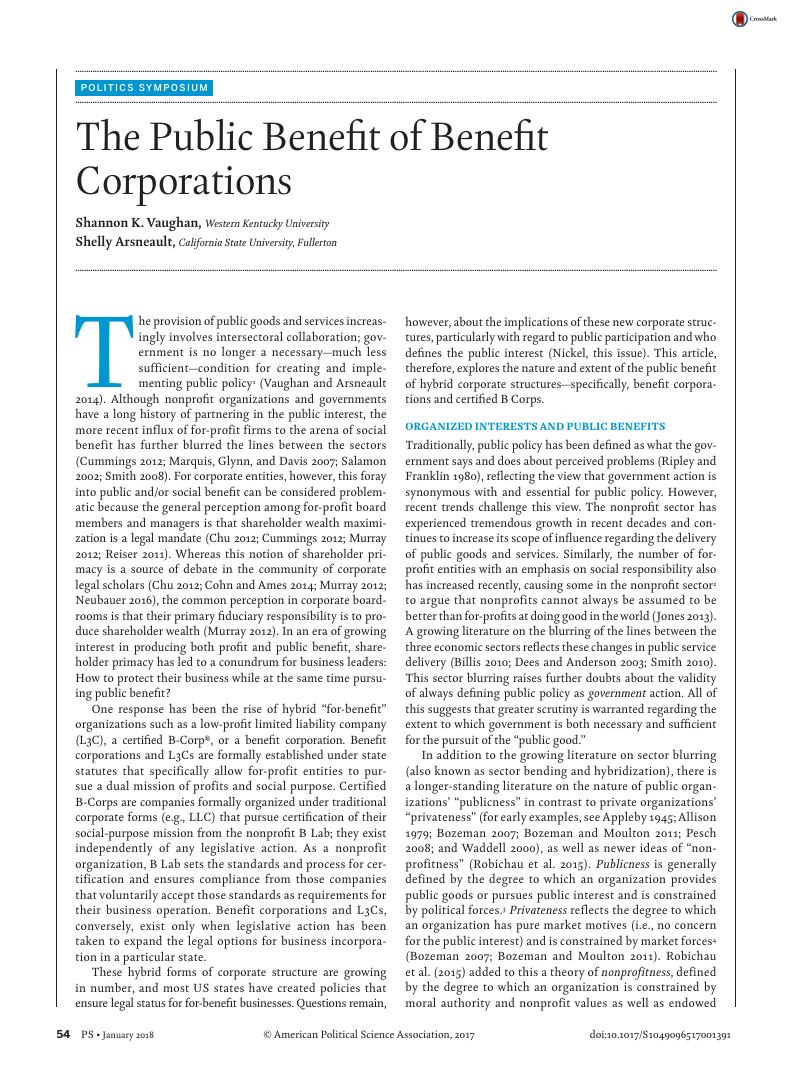Crossref Citations
This article has been cited by the following publications. This list is generated based on data provided by Crossref.
Prescott, Susan
and
Logan, Alan
2018.
Larger Than Life: Injecting Hope into the Planetary Health Paradigm.
Challenges,
Vol. 9,
Issue. 1,
p.
13.
Mischkowski, Niklas S.
Funcke, Simon
Kress-Ludwig, Michael
and
Stumpf, Klara H.
2018.
Die Gemeinwohl-Bilanz – Ein Instrument zur Bindung und Gewinnung von Mitarbeitenden und Kund*innen in kleinen und mittleren Unternehmen?.
NachhaltigkeitsManagementForum | Sustainability Management Forum,
Vol. 26,
Issue. 1-4,
p.
123.
Alonso‐Martínez, Daniel
De Marchi, Valentina
and
Di Maria, Eleonora
2020.
Which country characteristics support corporate social performance?.
Sustainable Development,
Vol. 28,
Issue. 4,
p.
670.
Mion, Giorgio
and
Loza Adaui, Cristian R.
2020.
Understanding the purpose of benefit corporations: an empirical study on the Italian case.
International Journal of Corporate Social Responsibility,
Vol. 5,
Issue. 1,
Lashitew, Addisu
2021.
Corporate Uptake of the Sustainable Development Goals: Mere Greenwashing or an Advent of Institutional Change?.
SSRN Electronic Journal,
Wright, Steven A.
2022.
Handbook of Research on Cyber Approaches to Public Administration and Social Policy.
p.
55.
Mayer, Colin
2022.
What Is Wrong with Corporate Law? The Purpose of Law and the Law of Purpose.
Annual Review of Law and Social Science,
Vol. 18,
Issue. 1,
p.
283.
Fioretti, Michele
2022.
Caring or Pretending to Care? Social Impact, Firms’ Objectives, and Welfare.
Journal of Political Economy,
Vol. 130,
Issue. 11,
p.
2898.
Prysmakova, Palina
2024.
Obtaining Entrepreneurial Skills, While Preserving Motivation: Quasi-Experiment of Social Enterprise Training Effects.
Journal of Social Entrepreneurship,
p.
1.
Tchotourian, Ivan
Morteo, Margaux
and
Ben Messaoud, Yassine
2024.
Mission : photo d’un objet juridique de mieux en mieux identifié.
Lex Electronica,
Vol. 28,
Issue. 3,
p.
24.





